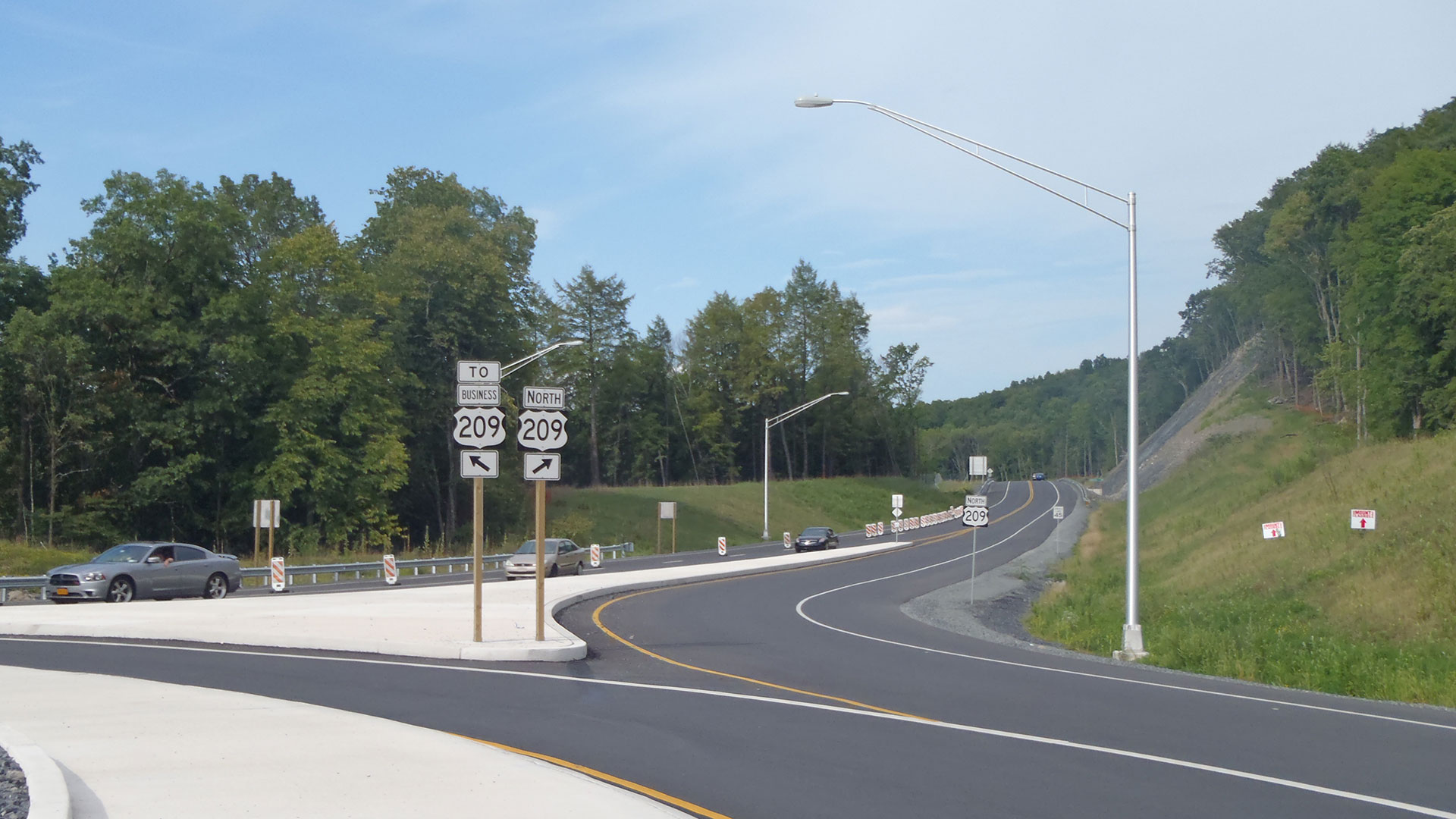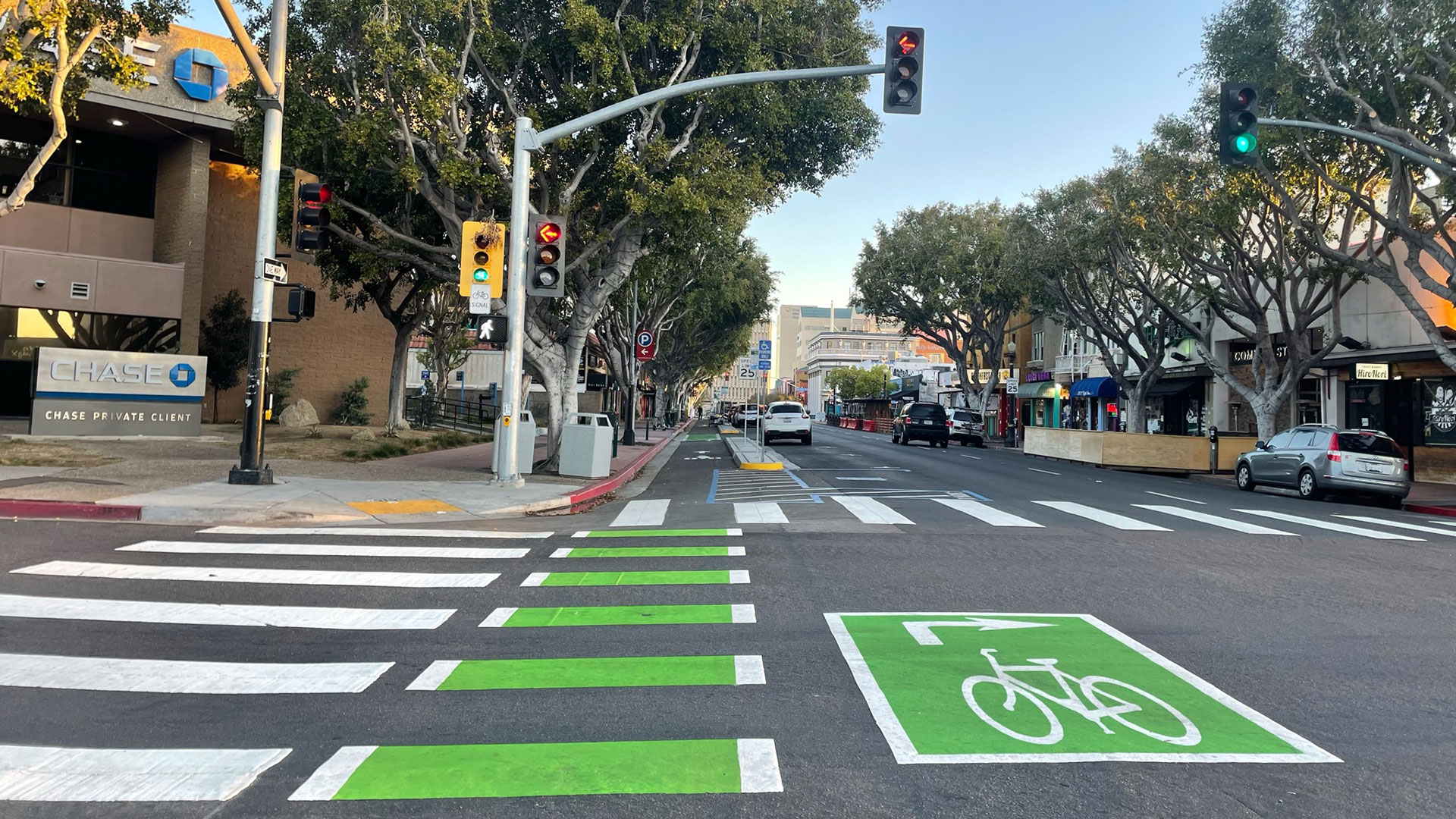June 9, 2025
In 2024, Guide for Intersection Control Evaluation (NCHRP Research Report 1087) hit the streets as a go-to resource for intersection control evaluation best practices, performance measures, and tools. This guide is assisting state and local transportation agencies in implementing intersection control evaluation, a decision-making framework that helps project teams objectively evaluate intersection form and control options.
This growing understanding and support of intersection control evaluation at the national level is exciting, not because it puts another publication on the shelf, but because it’s getting intersection control evaluation into design projects and changing the way project decisions are made—which is where the real value lies. Read on for a few ways our teams have been applying intersection control evaluation, and the difference we’ve seen it make!

Intersection control evaluation is changing the way project decisions are made at the design stage.
How Does Intersection Control Evaluation Benefit Design Projects?
Intersection control evaluation is meant to be used when new intersections are being designed, or when existing intersections are being substantially rethought. Once project teams have whittled a list of alternatives down to the most promising, intersection control evaluation helps them avoid subjectivity and assumptions by mapping out a consistent process to compare important factors like cost, safety, and capacity. The benefits of using intersection control evaluation at the preliminary design stage include:
- A strong emphasis on safety. Intersection control evaluation uses detailed analyses to guide project teams through quantitative evaluation of alternatives from a safety perspective.
- More cost-effective solutions. The use of life cycle cost analysis tools as part of intersection control evaluation helps project teams factor in hard costs such as construction, right-of-way, and maintenance, as well as less tangible costs including the societal costs associated with traffic delay and crashes, to see the big financial picture of each option in consideration.
- A data-driven story. Intersection control evaluation gives agencies a transparent way to describe how a decision was made, which can be helpful for the public as well as agency staff.
- Project readiness for grant opportunities. Some grants require project life cycle cost analyses, which intersection control evaluation includes. The quantification of safety and other factors also provides rich content for a compelling grant narrative and demonstrates that the project has been carefully thought through.
- Ultimately, a greater sense of confidence in the final recommendation through the use of an objective and consistent analysis framework.

Once project teams have whittled a list of alternatives down to the most promising, ICE helps them avoid subjectivity and assumptions by mapping out a consistent process to compare important factors like cost, safety, and capacity.
How does intersection control evaluation impact decisions at the design stage? Here are two recent projects in which we’ve applied it:
Converting a T to an O
SW Stafford Road, SW 65th Avenue, and SW Elligsen Road are three streets that converge in an “offset T” intersection outside Wilsonville, Oregon. Though it may look like a quiet, rural intersection, these streets can get busy as drivers cut through them to avoid traffic on the nearby I-5 and I-205 freeways. After a pattern of frequent crashes in the area, Kittelson conducted a Road Safety Audit and recommended looking at the intersection further and considering a roundabout to address its safety issues.
Given this background, our client (Clackamas County) already had a roundabout in mind when they engaged our team again to design intersection improvements in 2024. However, they wanted to weigh all options rather than assuming a roundabout would be the best solution for the intersection.
After brainstorming about a dozen alternatives with the County, we ran four of them through an intersection control evaluation process that we scoped based on national guidelines, taking a detailed look at how safety, operations, and cost compared from one alternative to the next. We used a life cycle cost estimating tool that indicated two single lane 3-leg roundabouts in series would be the most cost-effective option, and the Safety Performance for Intersection Control Evaluation (SPICE) tool, which supported the roundabout’s safety benefits. It turned out Clackamas County had the right idea in mind—but now they have a data-driven story to support it.
Picking the Right Size Roundabout
Also in Clackamas County, the intersection of SE Amisigger Road and Highway 224 was tagged as high priority for improvements because of safety and capacity concerns. It tends to be a major route for through movements, especially for freight and trucks.
We ran four alternatives through an intersection control evaluation process: maintaining existing side street stop control, a traffic signal, a roundabout, and an alternative intersection with a median acceleration lane. Once again, a roundabout emerged as the preferred option given its safety and ability to handle the intersection’s increasing capacity (going with the traffic signal would have meant adding several more lanes). The question remained, however, of what size roundabout would be most appropriate. We used intersection control evaluation again to compare single-lane and multi-lane roundabout options. The analysis showed that a single-lane roundabout could work in the near term (about 3-5 years), but beyond that a multi-lane roundabout would likely be needed to manage the anticipated capacity.
Add Intersection Control Evaluation to the Recipe Early
While intersection control evaluation is becoming more widely understood and embraced, the process looks different in different places. Some states (and local agencies) have formal intersection control evaluation policies, while others do not. Having a formal process is not a requirement, as intersection control evaluation can be scoped based on national guidelines, but it is critical that the project team and agency are on the same page with the framework and timeline from the beginning. This may require some upfront education about intersection control evaluation, and expectations for the process should be discussed and agreed upon.
We also don’t recommend using intersection control evaluation to evaluate every possible intersection form—that gets overwhelming quickly! We’ve found success with having initial brainstorming sessions to narrow down the most promising alternatives first (likely two or three), then putting those alternatives through intersection control evaluation to see which one has the edge.
Continue the Conversation
At Kittelson, we’ve been excited to not only practice intersection control evaluation in our design work, but also to develop web-based tools that can be customized to agencies’ intersection control evaluation processes, making it even easier and more efficient to move through the process. Stay tuned for more information to come about these offerings!
In general, we’re excited to see intersection control evaluation becoming increasingly normalized in the transportation design world as more states develop policies and agencies recognize the benefits of a consistent, data-driven process to make confident decisions. If you have a story to share about how intersection control evaluation has impacted your design projects, or if you’d like to discuss the topic further, reach out to any one of us.
